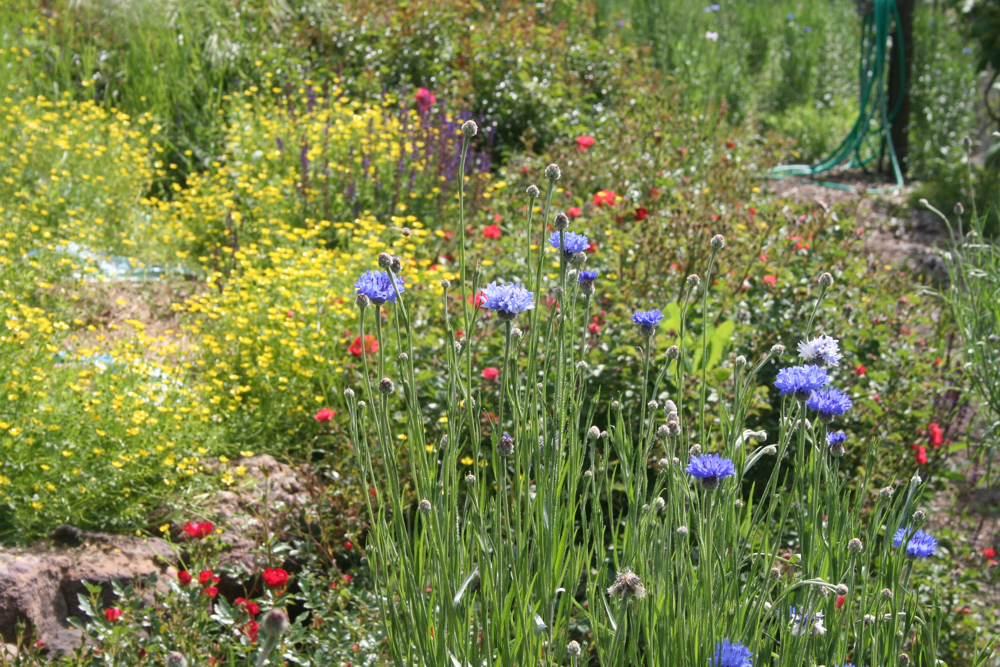Bachelor Buttons Bee Favorite
/Bachelor buttons volunteer to grow in this Missouri garden.
Bachelor Buttons Bee Favorite
One of the easiest flowers to grow for bees - well, easy to grow regardless - is bachelor buttons, also know as cornflowers. They are so easy to grow, they usually are the first seeds given to kids to grow when they are starting to garden.
The nickname "cornflower" comes from the fact that the plant grows wild in the grain fields of southern Europe. When Napoleon forced Queen Louise of Prussia from Berlin, she hid her children in a cornfield and kept them entertained and quiet by weaving wreaths of cornflowers. One of her children, Wilheim, later became the emperor of Germany. Remembering his mother's bravery, he made the cornflower a national emblem of unity.
Depending upon the variety, plants will grow to between 1 and 3 feet tall and are most effective when massed in beds and borders for color. Bachelor buttons are a cutting garden favorite, and they are one of the easiest flowers to dry for everlasting arrangements.
Although considered an annual, once established in an area they will usually re-seed themselves.
I have grown bachelor buttons in the three home sites I have had since I graduated from college. All three sites had a varying degree of good soil, moist conditions and, in one case, was precariously close to a border with iris that periodically was inadvertently mowed down.
How to Grow Bachelor Buttons
To grow, mark off a site where seeds are scattered after all danger of frost, usually early May.
Water.
Wait for seeds to sprout. Once seedlings are a good two inches, move to their final growing spot.
Bachelor button starts from seeds at Bluebird Gardens. I keep them watered until I can move.
We have had record hot temperatures in Missouri this year so I am going to wait until temperatures cool off before I move my seedlings. In the meantime, I keep them watered so their roots don't dry out in our record hot Missouri summer temperatures.
Looking forward to seeing my bees discover these beautiful, blue plants next summer!
Charlotte













